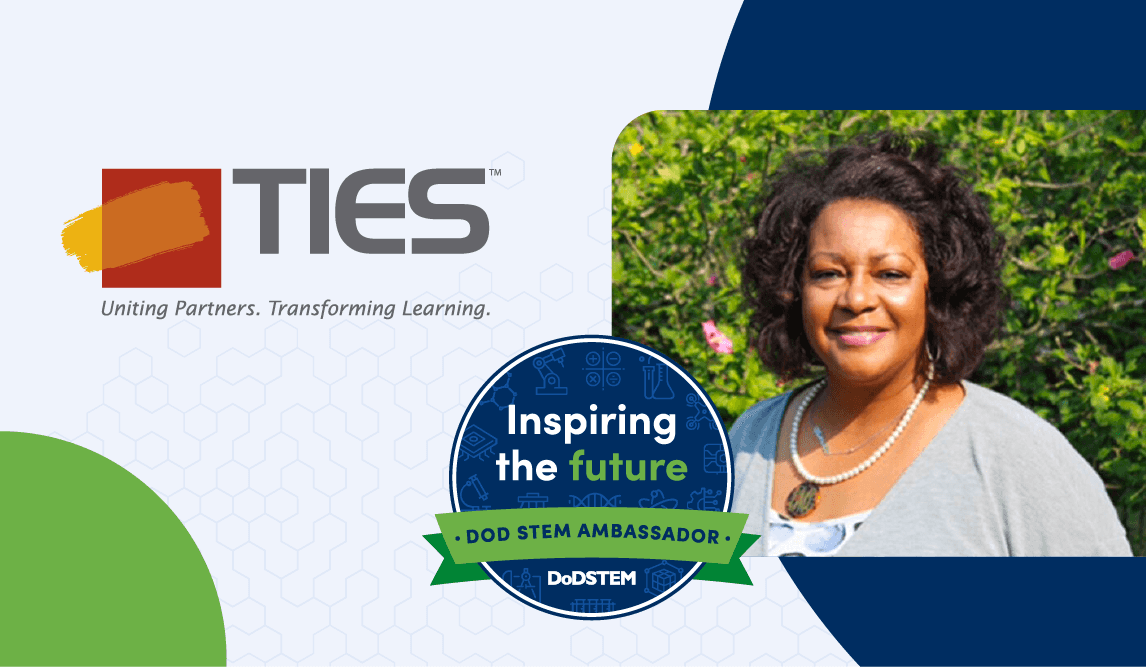Empowering Primary Learning Environments for STEMgineering
12 Feb 2024
Lisa Manning-Lewis, a DoD STEM Ambassador, Encourages Educators to Approach All Learning with a STEM Mindset
STEMgineering is an empowering concept for K-12 teachers and students. K-2 is often left out of formal STEM learning simply because the students are so young. We can empower teachers to hit the ground running toward creating STEM-empowered learners. Let’s include K-2 educators and students in our daily STEM conversations by encouraging STEM-adjacent projects, mindful connections to nature, and self-guided classroom experiences.

The following was written by Lisa Manning-Lewis, an advanced learning coordinator and DoD STEM Ambassador. DoD STEM Ambassadors work with the Defense STEM Education Consortium (DSEC) to advance STEM outreach for students who are underrepresented in STEM or military connected. Manning-Lewis was selected by TIES, a DSEC Partner, as its DoD STEM ambassador for the 2022-2023 school year.
Calling all educators! Let’s include grades K-2 in our daily STEM conversations and empower them to help their students become “STEMgineers” by approaching all learning with a STEM mindset, which helps develop critical thinking skills. For example:
- Build a STEM-nurturing environment in the classroom with lots of diverse opportunities for exploration.
- Use technology—both plugged-in and unplugged.
- Provide building activities that incorporate engineering concepts either directed by the teacher or where students can tinker based on their abilities.
- Make scientific connections between plants, space, and nature to inspire independent thinking.
- And most importantly, choose math lessons that incorporate hands-on activities to spur spatial awareness and build a foundation for future learning.
Educators can become STEMgineering ready without previous STEM experience. Here are more ideas to help you support the next generation of STEM-connected learners:
STEM-Nurturing Environments
Including plants in your classroom is easy and requires little to no money to get started. Have students plant seeds in repurposed water bottles. Start a hydroponic garden with space seeds (seeds that classroom teachers can get from NASA for free) or harvest and plant seeds from the dinner table, such as tomato, green peppers, oranges, or apples. You can start simple and grow as your students grow.
Technology
Robots are great—both plugged-in and unplugged. I love for my students to use marker-coded robots to design, learn, and investigate. These robots can be a great starting point for students since they only need markers and the robot. We use these robots in every subject, such as drawing, calculating math problems, making story timelines, and creating individual ideas. I am a big fan of the Ozobot, and my students love the diversity and ease.
Engineering
Designate classroom space for tinkering with building blocks, KEVA© bricks, and task cards. Add an instant camera so students can snap a picture and write about their creations.
Math
Use open-ended questions, including those that provide an answer and prompt students to find a solution. Use books like Picture Pie where students can create something connected to math. Use LEGO© math counters where students count brick colors, sizes, and totals. There are also student-operated robots for practice drawing numbers.
If you are in love with the idea of STEMgineering and your school does not have a STEM club, please consider starting your own program. Your club will have a lasting effect on the littles, and will encourage connections that may not be available elsewhere. Consider having students practice graphic design by sketching out a T-shirt design that can be printed with a Cricut-type machine. You can get more mileage out of this activity by using bots to code the student designs.
STEMgineering is everywhere! It starts in the classroom and connects to the environment. Consider having students perform predesigned tasks—I have several task cards available for free on the Teachers Pay Teachers website. Encourage students to connect with nature by measuring trees, building homes for animal visitors, planting a butterfly bush, or just keeping a journal about what they experience in their own backyard. We never know what will turn on the lights for our next future scientist!
About DoD STEM and Defense STEM Education Consortium
Defense STEM Education Consortium (DSEC) is a collaborative partnership of STEM-focused organizations dedicated to addressing and prioritizing our nation's STEM talent. DSEC aims to broaden STEM literacy and develop a diverse and agile workforce with the technical excellence to defend our nation. Through strategic investment in STEM education and outreach activities, the effort will provide students with more exposure to educational and career opportunities as well as DoD research. DSEC is led on behalf of DoD STEM by RTI International.
About Teaching Institute for Excellence in STEM
Teaching Institute for Excellence in STEM’s (TIES’s) goal is to work with school districts to ensure that all young people complete their secondary and postsecondary education “STEM ready.” This vision is intentionally inclusive of all students and reflects educational inequities. TIES defines success not by whether students choose to pursue STEM careers but by whether they have been provided high-value, relevant education that allows them to graduate with the skills and knowledge to make informed choices. TIES’s role in DSEC is to expand partnerships between numerous TIES ecosystem projects and DoD laboratories.